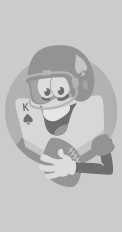

One of the best-selling western novels of all time was 'Shane.' It was the story of a retired gunfighter named Shane who came to the rescue of a sheep farmer who was caught up in a range war in a nondescript valley somewhere in the American Southwest.
The author of the book was Jack Schaeffer, a school teacher from back East. Schaeffer was a slightly overweight man who walked with a limp because of a bout with polio as a child. Although he had never been out West, he used his imagination to create a powerful story about a quiet-spoken gunfighter who would be portrayed by Alan Ladd in a movie that became one of the most popular western sagas ever produced.
As a young sports editor on the Tucumcari Daily News in Tucumcari, N.M., I had the good fortune of meeting Schaeffer who did a lot of his research on western subjects in Quay County, N.M., once the stomping grounds for outlaws like Billy the Kid, Black Jack Ketchum and the Hole in the Wall Gang.
Schaeffer had a friend in Tucumcari named Herman 'Corny' Moncus who owned the Elk Horn Drug Store and Museum. Moncus, whose brother Claude was sheriff, assisted him with his research on several of his western novels like 'Young Blood' and 'The Mustangs' which were made into movies.
Moncus was president of the Tucumcari Chamber of Commerce. He knew I loved writing feature stories and invited me to lunch with him and Schaeffer at Tucumcari's popular Cattleman's Cafe. The author had driven down from his newly purchased ranch near Santa Fe to research a book idea.
I was thrilled at interviewing such an accomplished writer and asked him how he came up with his concepts for some of the characters he created in his novels.
'It isn't that hard,' said Schaeffer. 'I try to modernize my westerns by asking myself questions like, 'What was the one thing that got the kids excited about life back in the days of the old West?' The answer, of course, is the same thing that gets children and teenagers excited today -- speed.
'They didn't have cars in those days, so a good horse would be something that would impress any kid. I used that concept in 'Shane' and some of my other books like 'The Mustangs' to tell the story.'
Schaeffer had an appreciation for horses. He spent many leisure hours at the quarter horse and thoroughbred race tracks in Ruidoso, Los Alamitos, Tucson and El Paso. On several occasions when he visited Tucumcari, he would call me and we would sit down over a cup of Folgers Coffee at Corny's drug store.
Our conversation would be wide-ranging, about movies, gunfighters, lawmen, short stories, outlaws, lost gold mines and fast horses. Especially fast horses since he was a veteran at gambling and I was just a novice.
While we both liked reading the Daily Racing Form, we both agreed it was highly over-rated. According to Schaeffer, he only looked at three factors when picking a horse to back in a race -- can a horse run and does it have early or late speed?

It's easy to tell if a horse can run by checking its past performances and workouts in the Daily Racing Form, by the way. A blazing three-furlong workout of .34.2 breezing or breezing from the gate is far more important in determining a horse's potential than a four-furlong workout of .48.5 handily. And if you finds a horse that has early speed in a race where all the other contenders are closers, that's the one you bet the ranch on, Schaeffer would tell me with a wink.
After a year, I left the Tucumcari newspaper to return to my family home in Pennsylvania. Before I left, Schaeffer invited me to spend a day at his ranch, a lovely little spread that sat in a hidden valley between Santa Fe and Taos, much like the ranch he had portrayed in 'Shane.'
Schaeffer and his wife were wonderful hosts. The food and drink were memorable and we went horseback riding to explore some caves in the caprock country near his ranch. I still remember the thrill I got when I was riding back to the ranch and a herd of 20 wild horses slipped up behind me and tried to lure my horse into their herd.
Schaeffer had warned me about the mustangs. He said if they came near I should get out of the area quickly to prevent the wild horses from pulling my horse into the herd.
I was a mile from the ranch when the mustangs approached. I kicked my brown gelding into a gallop. Ahead I could see the Schaeffers standing next to the ranch house. I leaned low over the saddle and loosened the reins. We beat the mustangs to the ranch by about 50 yards.
The wild horses were obviously disappointed. They stood there whinnying and pawing the ground before turning and heading back for the caprock.
'Fast horse,' said Schaeffer approvingly. 'Nice ride.'
As I slipped out of the saddle, I grinned. 'The early speed helped,' I said. 'I'll have to remember that next time I bet on a horse race.'
Author: Geno Lawrenzi Jr.
(Geno Lawrenzi Jr. is an international journalist, magazine author and ghostwriter. If you have a unique gambling story to share with him, you may qualify for a cash award. Send your story with all the details to glawrenzi@gmail.com ).
Your feedback
Please enter your comment.
Your comment is added.




